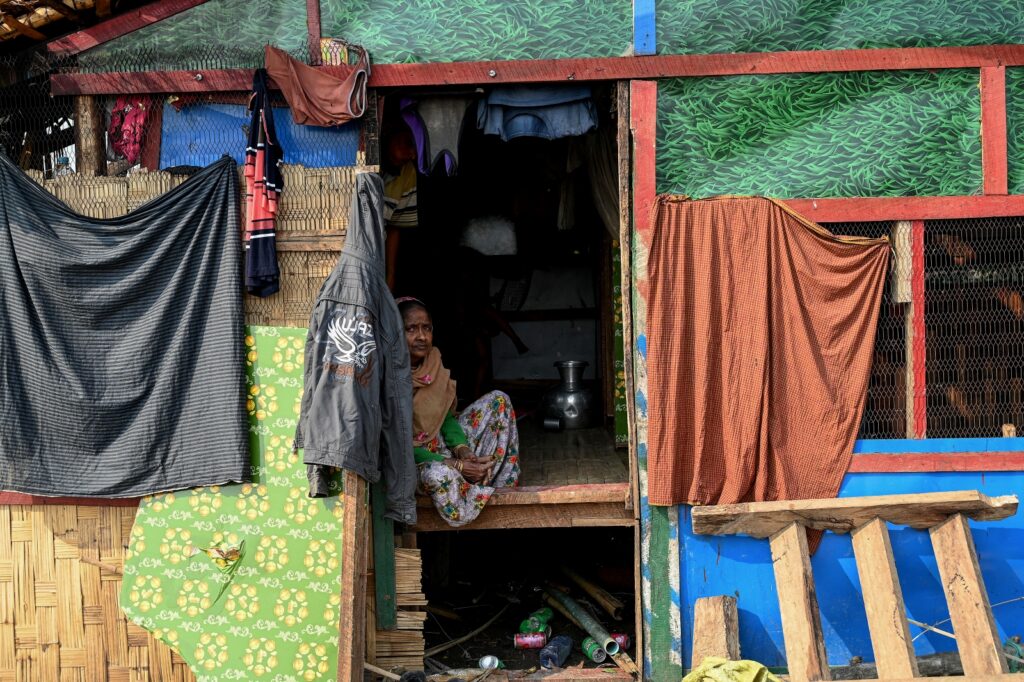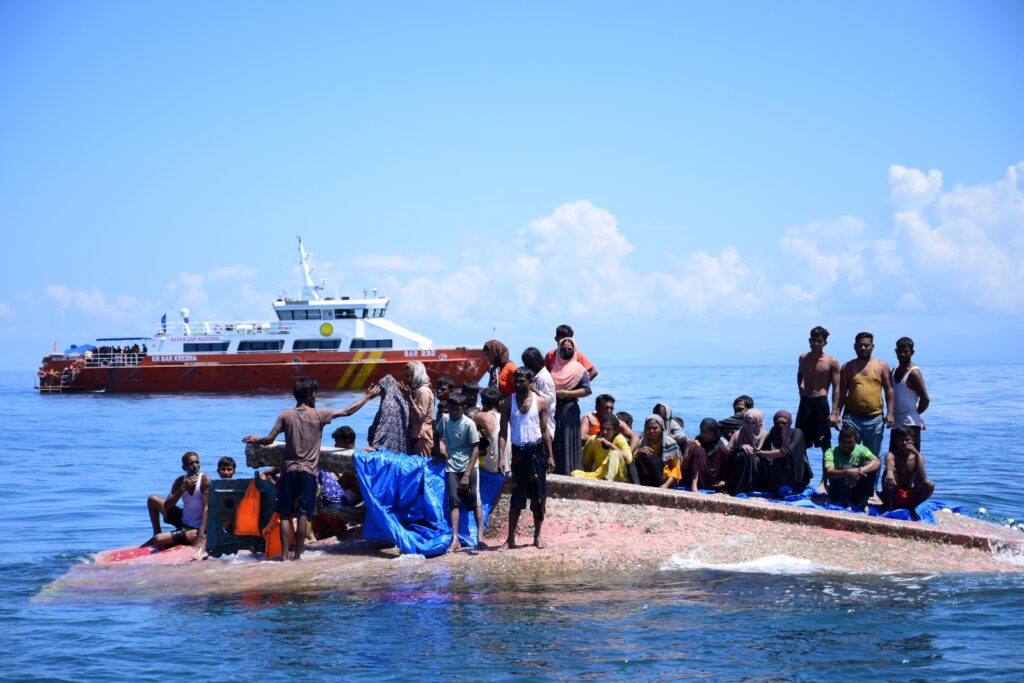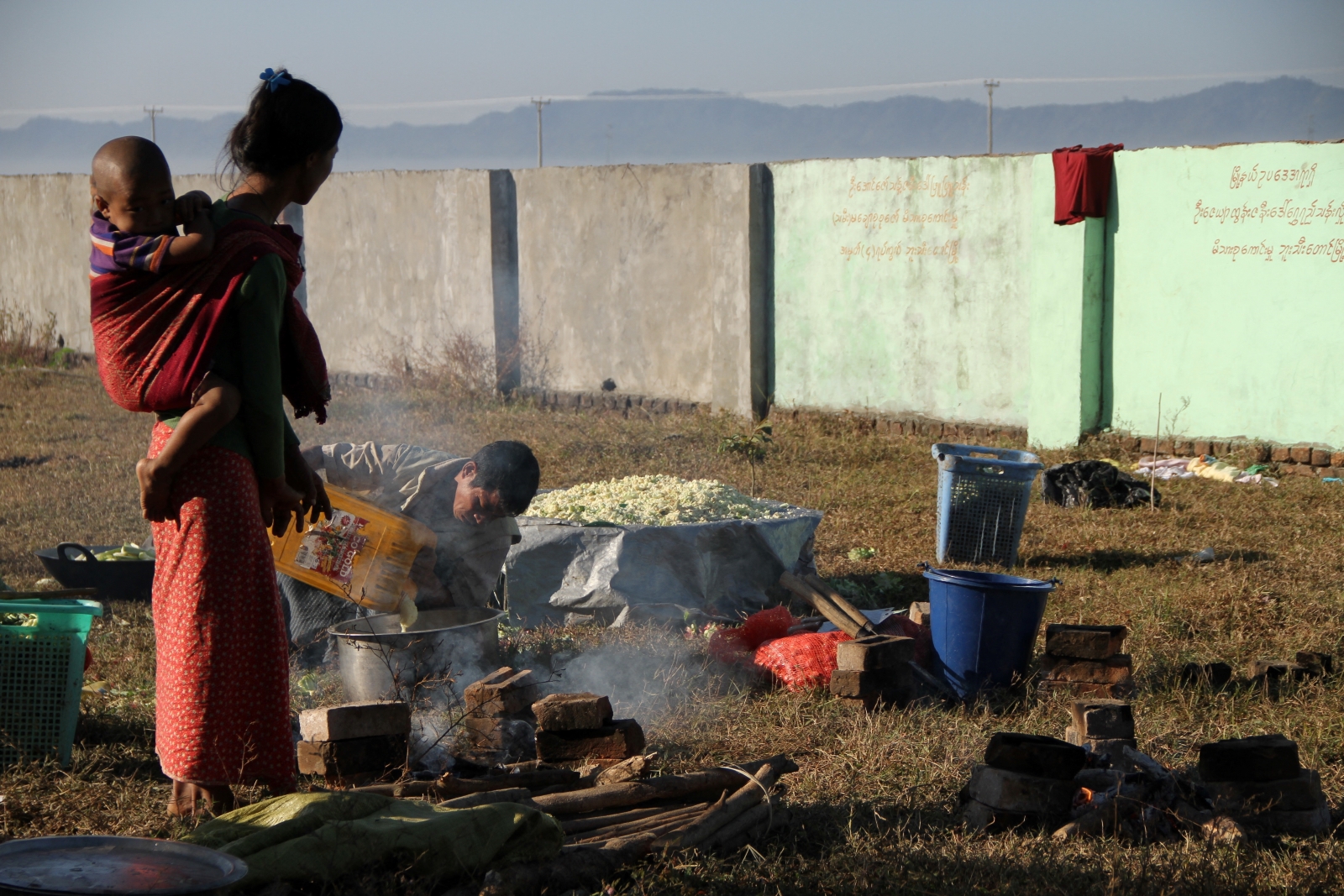Amid budget cuts and surging crime in the refugee camps in Bangladesh and war in their native Rakhine, more Rohingya are taking a perilous journey by boat to Indonesia and Malaysia, where an increasingly hostile reception awaits.
By FRONTIER
After a week on the boat, they ran out of food.
“For a few days we didn’t eat anything. Everyone was starving,” recalled 20-year-old Rohingya refugee Hamidul Hoque, who said one woman didn’t make it.
“We prayed over her body and threw it in the sea. We all cried and prayed to Allah,” he said. “The whole time, all I could see was ocean. I was so afraid I would die on that boat. I prayed every day to reach Indonesia and even began to regret getting on the boat.”
Like hundreds of thousands of others from the persecuted Muslim minority, Hamidul Hoque fled Myanmar’s Rakhine State in 2017, during the military’s rampage of mass murder, rape and arson.
When he arrived in Bangladesh, he managed to get a job helping distribute food and other supplies for the United Nations refugee agency, making around US$90 per month. But when his position was terminated last year, he decided to use his meagre savings to try to get out.
“Some people told me I should go to Indonesia, so I contacted the human traffickers that lived near the camp,” he said. “Cox’s Bazar has become dangerous for us. There have been many murder cases and the gangs are recruiting young people. There’s no good future here, and we can’t go back to Myanmar.”
He paid his entire savings of 100,000 taka ($910)to get on a small boat in Teknaf, before transferring to a bigger boat on the open ocean. He said more than 250 Rohingya were on the overcrowded vessel, which arrived in the Indonesian province of Aceh after 18 days at sea.
There, UNCHR staff took them to a camp with tarpaulin tents near the beach, where Hamidul Hoque said hundreds of refugees sleep side by side on the ground.
“I feel like the situation in Indonesia is no different from Bangladesh,” he said, explaining that refugees in Aceh are also prohibited from working, studying or leaving the camps. “It’s very disappointing.”
Meanwhile, the once-welcoming population of Aceh has become hostile to Rohingya refugees, staging protests and even assaulting refugee centres.
“If I got the opportunity, I’d go to a third country, but I haven’t seen anyone here go to a third country since I arrived,” he said. “But if I could work and study in Indonesia, I’d be fine living in Indonesia.”
He said he spoke to his family on the phone, reassuring them that he survived the boat journey, but hasn’t told them how much more difficult life has been in Aceh than he expected.
“I don’t want to tell them my true feelings or explain my situation. I don’t want my mother to worry or feel sad for me,” he said.
Increased hostility towards Rohingya refugees in Muslim-majority Indonesia and Malaysia comes at a time when life in the refugee camps in Bangladesh and their native Rakhine is becoming more and more untenable. In Bangladesh, funding cuts have left refugees scraping for food while organised criminal gangs have taken over the camps. Meanwhile, Rakhine is engulfed in renewed fighting between the Myanmar military and Arakan Army, even while communities struggle to rebuild after Cyclone Mocha.

Walls closing in
Ko Shwe Aung* has been living in a refugee camp in Bangladesh’s Cox’s Bazar since his home and farm in Rakhine were torched by the military in 2017.
“The camps are very overcrowded and there isn’t enough food, so many people want to go to Malaysia or Indonesia,” he said. “They want to try to find a better future than the life in the refugee camps.”
According to data released by the UNHCR, the number of Rohingya traveling by boat jumped from 3,705 in 2022 – already the most since 2015 – to nearly 4,500 last year.
Nearly seven years since the military’s brutal “clearance operations”, international humanitarian support is dwindling, but the need is greater than ever. The population continues to increase, but refugees are confined to the same camps, without the legal right to work, leaving them dependent on donations that are drying up.
“When we first came to Bangladesh, many organisations came to donate food,” Shwe Aung said. But now that support has dwindled. As of this year, the World Food Programme is budgeting just $10 per refugee per month, citing decreased funding from member states. Shwe Aung said these days, he’s lucky if he has any curry with his rice.
“How can they live on $10 per month?” asked activist Ro Nay San Lwin, founder of the Free Rohingya Coalition. “It’s not enough for food. And they live in small shabby tents. They get wet when it rains, they suffer when it’s hot.”
“They’re facing difficulties from all sides, and then the human traffickers come and say they will take you to Malaysia, where you can get a job and a good salary. So of course people try to go there.”
As the situation in the camps deteriorates, organised crime is on the rise, further pushing some to risk it all to leave. Refugee Ko Myint Kyaw* said that killings and shootings are now a common occurrence.
“We’re very afraid,” he said. “We have no safety, no food and no work. If you stay here, your life will never change.”
Meanwhile, Rohingya living in Rakhine – particularly Buthidaung, Maungdaw and Sittwe townships in the north– are also taking the plunge.
Amnesty International has described the treatment of Rohingya in Rakhine as apartheid, and the situation has only worsened with the economic crisis caused by COVID-19 and the 2021 coup. Cyclone Mocha, which disproportionately affected Rohingya communities, heaped more misery on them last year, as has renewed fighting between the military and Rakhine nationalist AA.
“Last year, cyclone Mocha destroyed the northern part of Rakhine, and many Rohingya lost their homes. Now the Arakan Army and the military are fighting again in Rakhine. Commodity prices keep rising. The only option left for the Rohingya is to go abroad,” said Ko Kyaw Win*, a member of a Rohingya social welfare organisation living in Sittwe Township, where most Rohingya are confined to camps on the outskirts of the state capital Sittwe town.
“We have no future here. Many Rohingya think we will be stuck in these camps forever. Even those who go to university and get a degree can’t get a job. We can’t do anything. We can’t even go freely into Sittwe. Living here is like living in a cage,” he said. “So many young people want to leave. They think if they can reach Malaysia, there will be some small hope for the future.”
Ko Zaw Oo*, 24, is one such young man in Buthidaung hoping to reach Malaysia, find a job and bring the rest of his family over.
“I want to work on a farm or a factory, but I’ll do any job with decent pay. And then I’ll save money and support my family until I have the opportunity to bring them to Malaysia,” he said. “I know working in Malaysia won’t be easy, but it will be better than living here. It’s my only hope.”

The way out
But the journey is expensive and fraught with danger.
Travelling by boat costs around K10 million (around $2,600 at the market rate), and this rough and dangerous journey takes 10 or 11 days – if they’re lucky – according to Shwe Aung and Zaw Oo. Shwe Aung said some traffickers don’t even feed people during the perilous journey, and some inevitably die of starvation, exposure, or drowning when boats capsize.
According to UNHCR, at least 569 people – more than 12 percent of those who attempted the journey – went missing or died while travelling by boat last year.
“We know the risks. If we go to Malaysia by boat, there are many possibilities of death at sea. All Rohingya know that.” said Zaw Oo. “But staying here now is like a living death. At least after risking my life, I will be able to work and eat when I get to Malaysia. That’s why we’re going.”
Travelling by land, which requires crossing multiple state and international borders, is more expensive than going by sea, but significantly less dangerous. Kyaw Win said it costs around K12 million per person, and half of it must be paid in advance.
“For the water route, you can pay once you reach Malaysia. That’s why the land route is used by the Rohingya who can afford it,” he said.
But travelling overland has its own risks. In 2015, mass graves of Rohingya refugees were found in the jungle along the Thai-Malaysian border, where they had been killed by traffickers. Others are captured by Myanmar security forces and jailed for immigration violations.
“The main advantage of the land route is that there’s less chance of dying, but there’s a higher risk of being arrested,” said Nay San Lwin.
Some do find safety and a livelihood on the other side, but live precariously due to their illegal status. Ko Maung Maung Gyi*, who was part of an earlier wave of Rohingya refugees, arrived in Malaysia by boat in 2013. He was lucky enough to secure a position as an interpreter with an international NGO helping other refugees, making 3,000 ringgit ($630) per month, but said many other Rohingya are not as fortunate.
“Many other Rohingya make around 2,000 ringgit per month working at restaurants or shops. But they have no contracts, so they can get fired easily. Sometimes employers refuse to pay their Rohingya workers, and they can’t go to the police. If they complain to the police, they’ll get arrested because they’re working illegally,” he explained.
Still, he said Rohingya are safer in Malaysia than Rakhine and have at least some rights.
“We have freedom of religion here, we can freely worship in Malaysia, which we can’t do in Rakhine,” he said. “In Bangladesh, we have no jobs and have to rely on NGO support, but here we can work to make enough to eat and live,” he said.
“We live here because we can make a living, but we’d be more happy in our native country. We want to go home.”
*indicates the use of a pseudonym for security reasons







